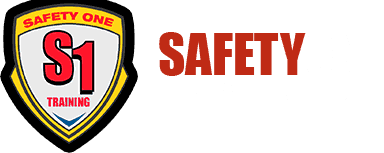02 May Safety & Accountability – THE Conversation
From time to time here at Safety One Training we have conversations about safety with other companies and individuals who do not do exactly what we do, but offer complimentary services. As they often have strong messages and opinions that should be shared, we have the opportunity to share with you some of their thoughts and wisdom as guest bloggers here on our site. Below is a post from Maryanne Wanca-Thibault, Ph.D. – President // Communication & Leadership Strategist at Creative Intelligence Inc. who specializes in Safety Leadership Performance.
Accountability
There are always difficult conversations that leaders face in the workplace, but one of the most important is holding people accountable for their behaviors. One reason that most of these conversations occur is that there is a “perceived” lack of commitment or a violation of expectations on the part of one or both parties. When faced with this conversation the immediate response is often based on emotion, not logic. This leads to frustration and blame, which is not conducive to problem solving. For example:
You and your partner do maintenance on wind turbines. Every unit has to be checked on a quarterly basis. There are safety procedures that you are required to follow. It’s not that they are difficult, but they do add time to the maintenance process. You have considerable experience and understand the importance of a safe work environment. In fact you have a spotless safety record. Due to higher than usual employee turnover your boss has increased the number of turbine inspections by 15%. This means that you are responsible for your territory and are expected to pick up the slack for slower, less experienced teams. You have tried to explain to your boss on two occasions that meeting the new schedule raises safety concerns for you and your partner. He maintains that he is under pressure as well. He is trying to hire new employees, but tells you that for the short term he expects you to do whatever it takes to meet your numbers.
You have walked away from these discussions with the impression that for the first time in 10 years of employment safety is a secondary concern for the company. Your boss doesn’t appear to be taking the situation (or you) seriously and his specific expectations are vague. While you haven’t expressed it to him, your frustration has you wondering if getting the work done is more important than your safety.
Your current interpretation of the situation is based on your version of the story. However, you may not have all of the facts about your boss’s intentions or behaviors. Is he really suggesting that you take safety risks? Are other’s getting the same message? At this point you are faced with having a different type of conversation with him or simply moving forward in silence. Yes, he is your boss, but you decide the necessity of having the conversation outweighs the possibility that there will be negative repercussions for you.
To prepare, your first action is to determine your accountability for your role in the current situation and determine where you lack clarity. Then examine the presenting problem from the “inside out.” Only then will you know if you are planning the right accountability conversation with your boss. There are a couple of things to keep in mind as you plan your strategy.
- Focus on the real violation, not just the presenting behaviors – It turns out that if you keep having the same conversation and there is no change, you may be addressing the wrong violation. In the example, it appears that increasing productivity violates safety standards. However, while maintaining safety is essential, you may be addressing what is convenient or easy, rather than a deeper issue. After further examination you realize that what bothers you most is that you are questioning whether your boss can be trusted to make decisions about your safety. You realize that he may not know how his behavior is affecting your trust in his judgment. Wouldn’t this shift in your perspective change the type of conversation you have with him?
- Change judgment into curiosity – Rather than assuming you have the entire story, ask yourself what might be causing your boss to act in a particular manner. It is possible that there are other explanations for his response, but remember that further conversation will likely be about more than violating safety standards, because your larger concern is now trust. While his viewpoint probably makes sense to him, you want to make sure he seriously considers your concerns.
- Ask yourself what you do and don’t want – The next step is to be clear about your expectations for an accountability conversation. First and foremost you are looking for ways to rebuild trust and confirm agreement on the importance of workplace safety. You don’t want the conversation to turn into an attack or put him on the defensive. The reality is that many accountability conversations fail not because the other person is wrong, but because they are handled poorly when expectations are unclear. Of course you won’t have all of the information until you hear the other side of the story and that necessitates actually planning the next conversation.
These basic first steps involve an internal dialogue, which requires self-awareness and the ability for self-reflection. Outlining your position helps to confirm or disconfirm your “reality” in light of the boss’s perspective. If you can reach consensus with your boss there can be some collaborative efforts directed at finding a solution, setting clear expectations, and following up on the desired outcomes.
Ultimately, these types of accountability conversations rely upon an individual’s ability to set aside preconceptions and focus on inquiry that gets both parties directed toward a common problem/solution. It can be challenging, but to create change there has to be shared understanding. This means analyzing the situation from the “inside out” as you plan the conversation.




Gary Chipman
Posted at 12:45h, 07 MayThat was informative. What is the value of not being injured ? Can we skip proven solutions ? Are we talking to the walls ? Maybe one injurie… is one to many ? “Gary Chipman OSHA”
Morten Osnes Vik
Posted at 11:10h, 07 MayThis was not only great, it is also transferable to so many other situations where intentions are difficult to translate into shared understanding and basis for good problem-solving and decision making.
Thanks.